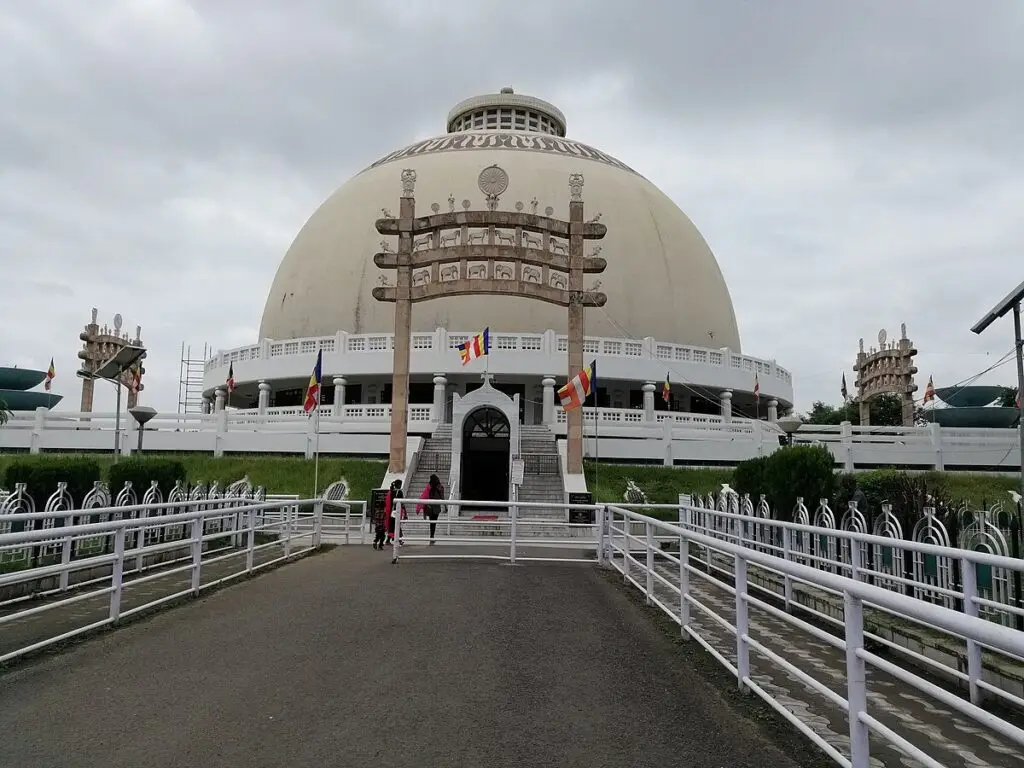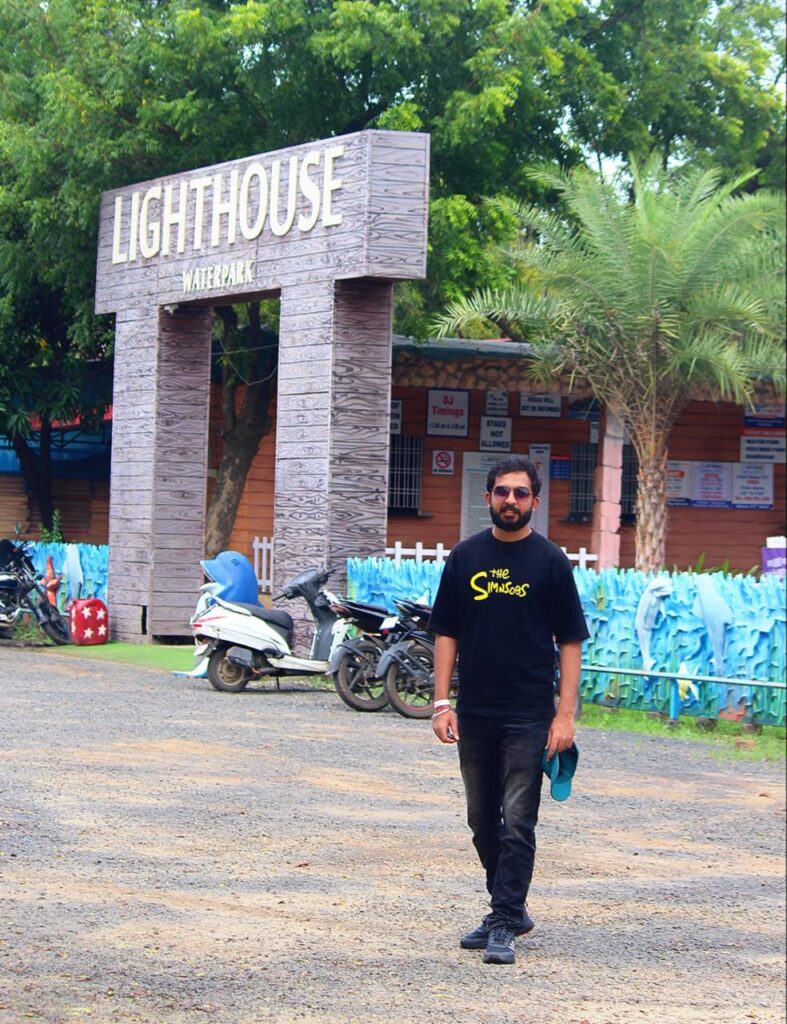Discovering Diksha Bhumi - The Heart of India’s Buddhist Revival
In the heart of Nagpur, Maharashtra, lies a place that resonates with historical transformation and spiritual awakening. Diksha Bhoomi nagpur, known as the ground where Dr. B.R. Ambedkar embraced Buddhism along with his followers, is more than just a monument. It’s a symbol of hope, equality, and a movement that still echoes across India. Let’s dive into the history and importance of Diksha Bhumi through the lens of its remarkable story, the energy it exudes today, and the experience it offers to visitors.

A Journey Back in Time - The Birth of a Movement
Imagine Nagpur on a clear October day in 1956, where thousands have gathered, their anticipation palpable in the air. Dr. B.R. Ambedkar, a towering figure for social reform in India, stands before them, guiding them through a transformative moment. He had long seen the suffering imposed by the caste system and had tirelessly advocated for the rights of the oppressed. This moment in Nagpur was to be a turning point – he would embrace Buddhism and, in doing so, offer a new path of spiritual and social liberation to his followers.
With a simple declaration, Dr. Ambedkar and nearly half a million people renounced the shackles of caste-based discrimination and embraced the egalitarian principles of Buddhism. This mass conversion, now known as the Dhamma Chakra Pravartan, was the birth of a movement that would reshape social consciousness in India. It was a moment that echoed Dr. Ambedkar’s ideals of equality, compassion, and dignity for all.
The Symbolism of Diksha Bhumi’s Architecture
Years later, Diksha Bhoomi nagpur emerged as a symbol of that transformative moment. The stupa, a majestic circular structure, stands proudly, representing not only Buddhist architecture but also the cyclical nature of life and liberation. The building’s design captures Buddhist themes – serenity, peace, and introspection – allowing visitors to connect with the very essence of what this place represents.
Inside the stupa, visitors find a peaceful meditation hall, where the ambient silence invites introspection. The hall is large enough to hold thousands, a reminder of the masses who first gathered here with Dr. Ambedkar. Each corner of Diksha Bhumi carries his spirit, embodying his vision for a society free from discrimination. The architecture becomes an invitation to meditate on these themes, allowing visitors to reflect upon the progress and challenges in the journey toward social justice and equality.

Celebrating Dhamma Chakra Pravartan Day - A Gathering of Hope and Unity
Every year, on October 14, Diksha Bhoomi nagpur transforms. It comes alive with thousands of pilgrims and visitors who gather to commemorate Dhamma Chakra Pravartan Day. This celebration marks Dr. Ambedkar’s revolutionary act of embracing Buddhism, and people from across India and even abroad arrive to pay homage.
The grounds are filled with families, students, elders, and spiritual seekers, each carrying a personal connection to Ambedkar’s legacy. It’s a sight to behold, as the air fills with devotional songs, chants, and speeches that echo the message of peace and equality. The atmosphere is both reflective and celebratory, with cultural performances, workshops, and prayer ceremonies adding to the experience.
For those who visit during this time, the celebrations are a powerful reminder of how Dr. Ambedkar’s message of social justice remains relevant. It is a time for the community to come together and reflect on the progress made and the steps that lie ahead. Each visitor becomes part of this continuum, a reminder that the fight for equality and dignity is ongoing and requires collective strength.
Experiencing Diksha Bhumi - A Visitor’s Journey
Walking into Diksha Bhoomi as a visitor is a profound experience. The sheer scale of the stupa and the serenity of the grounds evoke both awe and tranquility. As you step closer, you are welcomed by guides and volunteers eager to share stories of the site’s history. The museum nearby offers an array of artifacts, including photographs of the mass conversion ceremony, Ambedkar’s teachings, and personal items that connect visitors to his life and work.
A significant part of the experience is the meditation hall. As you sit in the quiet hall, surrounded by others who are also reflecting on their journeys, you feel a collective sense of purpose. Here, people come to reconnect with Dr. Ambedkar’s teachings or to find a moment of peace amidst busy lives. This hall is more than just a space; it’s a haven for introspection and unity.
Nearby, you can explore the sprawling grounds filled with statues and plaques, each narrating parts of Ambedkar’s story. You may notice visitors from all walks of life – students, families, and elders – all drawn by the profound history and promise of Diksha Bhumi. For many, the site is not just a place of pilgrimage but a beacon of social justice and spiritual belonging.
Diksha Bhumi’s Lasting Legacy and Relevance Today
Diksha Bhoomi remains a testament to Dr. Ambedkar’s vision of a just society. In a time when the world grapples with issues of inequality and injustice, Diksha Bhumi stands as a beacon, reminding us that true progress lies in inclusion and compassion. For Dalits in India, it is a source of pride and a reminder of their enduring strength and resilience. For others, it’s an inspiration, a call to break societal barriers and uplift one another.
Through this legacy, Diksha Bhumi continues to inspire movements across the world that seek to dismantle social discrimination. It stands as a reminder that even one individual can spark monumental change, and that change often begins with a single step toward compassion and unity.
Conclusion - A Place of Reflection, Inspiration, and Unity
Diksha Bhoomi is more than a place; it is an experience, a journey into the heart of a movement that reshaped millions of lives. From its historical significance to its cultural celebrations and serene atmosphere, it offers a unique blend of history, spirituality, and activism. As you walk through its grounds, you’re not just witnessing a site – you’re engaging with a piece of India’s transformative history.
So, whether you’re a follower of Dr. Ambedkar, a history enthusiast, or someone seeking a place of peace and reflection, Diksha Bhumi invites you to experience its spirit and be inspired by its legacy. A visit here is a reminder that the journey toward justice and equality is one we all share, and Diksha Bhumi stands as a symbol of that shared purpose.


